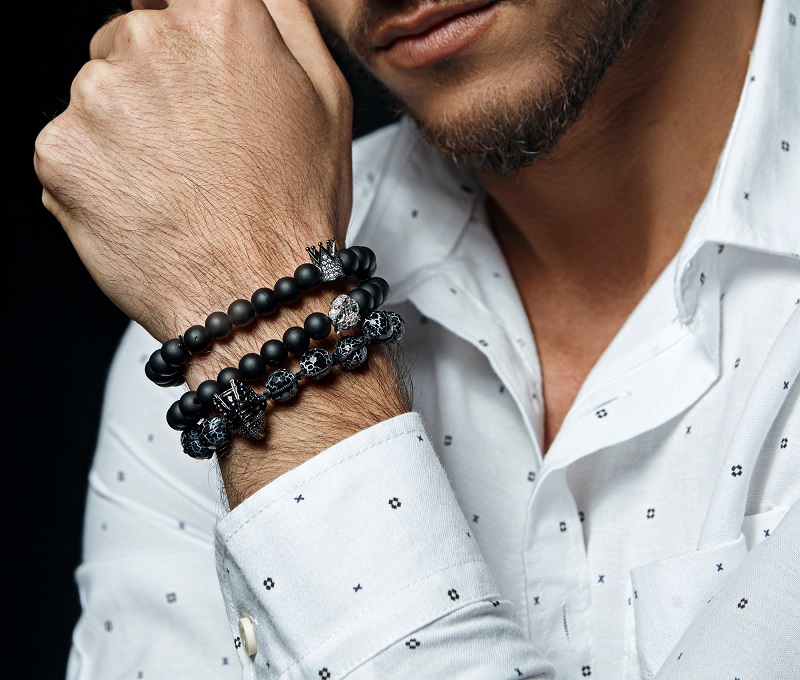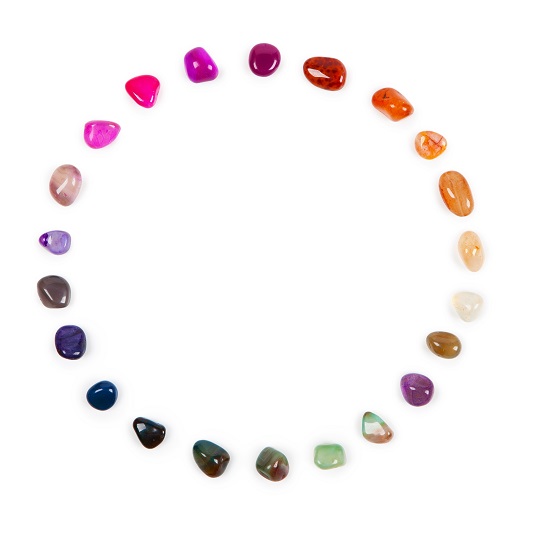Onyx Gemstone of the Week

Gemstone of the Week: Lapis Lazuli
19th January 2018
Jade, Gemstone of the Week
2nd February 2018Best described as a banded variety of Agate, Onyx is popular worldwide. Renowned for its distinct banded appearance, fine-quality specimens of the stone are often used in gemstone jewellery. The name ‘Onyx’ is thought to derive from the Greek word ‘onux’, which means fingernail. The naming of the stone is believed to relate back to a Greek Legend. In the tale, Eros cut the fingernails of Aphrodite whilst she was sleeping, and the gods turned the trimmings into stone. Typically, Onyx has a black base and a white upper; however, specimens can also be found in other colours such as brown and red. Some of the most common varieties of the gemstone include Sard Onyx, which has a white upper layer with a brown base, and Cornelian Onyx, which has a red base and a white upper layer. While Black Onyx is the most famous variety, Sard and Cornelian Onyx are actually more common. In this article, we explore the precious gemstone in more detail.
How to Identify Onyx
Even by the untrained eye, Onyx can be identified with relative ease. Boasting signature black and white banding, the stone is rarely confused with other gems. Typically, Onyx gemstones have a black base and a white upper layer; however, the colouring may differ depending on the type of Onyx. For instance, Sard Onyx has a brown base, and Cornelian Onyx a red. Some specimens may appear a single colour. In this circumstance, the gem is harder to identify and can be confused with other similar stones.
As mentioned previously, Onyx is a form of Agate; this means that the stone is related to all the other varieties of Quartz. When the stone is found in a single colour, it can become difficult to distinguish from Black Jade, Tourmaline, and Black Diamond. For trained professionals, though, identification is simple as Onyx is much softer and less lustrous than the other stones similar in appearance. The gemstone can also be confused with Jet; however, Jet is much soft than Onyx which measures a 7 on the Mohs scale.
Different Colours and Types of Onyx
Onyx Is built from bands of chalcedony; typically, these are black and white in appearance, with the bands showing as alternating colours. Occasionally, specimens may appear brown or red, rather than black. For instance, a variant of Onyx referred to as Sardonyx exhibits brown bands instead of black.
While Black Onyx is the most renowned variety, it is actually less common than Onyx with red or brown bands. As with most gemstones, Onyx often undergoes artificial treatments to enhance the specimens colouring. Various dyes are used to enhance the black colour of Black Onyx, and the brown colour in Sardonyx. Surprisingly, most of the Black Onyx on the market today is artificially coloured.
The name Black Onyx is sometimes used incorrectly to label materials similar in appearance. For instance, Banded Calcite is often falsely labelled as Black Onyx. As Calcite is readily available, the material is much cheaper; therefore, shops can carve, polish, and sell the stone for a cheaper price than they could with true Onyx.
Where is Onyx Found?
Unlike many gemstones, Onyx deposits are found in various locations all over the world. Notable sources include Argentina, Australia, Brazil, India, Botswana, Madagascar, Mexico, Myanmar, Pakistan, Sri Lanka, Uruguay and the USA.
Healing Properties of Onyx
Like most precious gemstones, Onyx boasts an array of great benefits when used in crystal healing. The stone is thought to strengthen the immune system and provide the human body with strength and vitality; because of this, Onyx is great for those that often suffer from periods of illness. The gem is also thought to prevent relapses after illness, helping the body to fight the germs before the effects are felt. Additionally, Onyx is thought to improve cell regeneration and the absorption of fluids and nutrients – qualities that are beneficial in times of ill health.
Onyx is also thought to improve the function of the nerves and sensory organs. Believed to be especially beneficial to the ear, the gemstone can sharpen hearing and help to combat diseases of the inner ear. Additionally, the stone is thought to benefit the teeth and bones. Relieving symptoms of bone marrow and soft tissue disorders, the stone is ideal for those suffering from chronic health issues. When used within crystal healing, Onyx is thought to work best with the Root Chakra. With this in mind, the stone may benefit those who suffer from weak legs, knees, or ankles
Emotionally, Onyx stabilizes the emotional body. Thought to bring strength in times of struggle, the stone can benefit those suffering from both mental and physical stress. Helping to calm the nerves, Onyx can be helpful to those suffering from anxiety. Working to restore rational thinking, the gemstone can help to rid feelings of worry and fear. Additionally, Onyx is considered beneficial for one’s confidence. Often referred to as a gift of wise decision making, the stone improves focus, self-belief, and self-confidence.
In Summary
Gem-quality Onyx is popular worldwide. Today, high-quality specimens are sourced from various locations worldwide, with notable sources being Australia, Brazil, and India. Popular for its unique appearance and signature banding, gem-quality Onyx is often used in gemstone jewellery. Whether you’re hoping to use the stone for its benefits within crystal healing or you’re looking for a beautiful new addition to your jewellery collection, purchase a good-quality piece of Onyx to reap the benefits.




